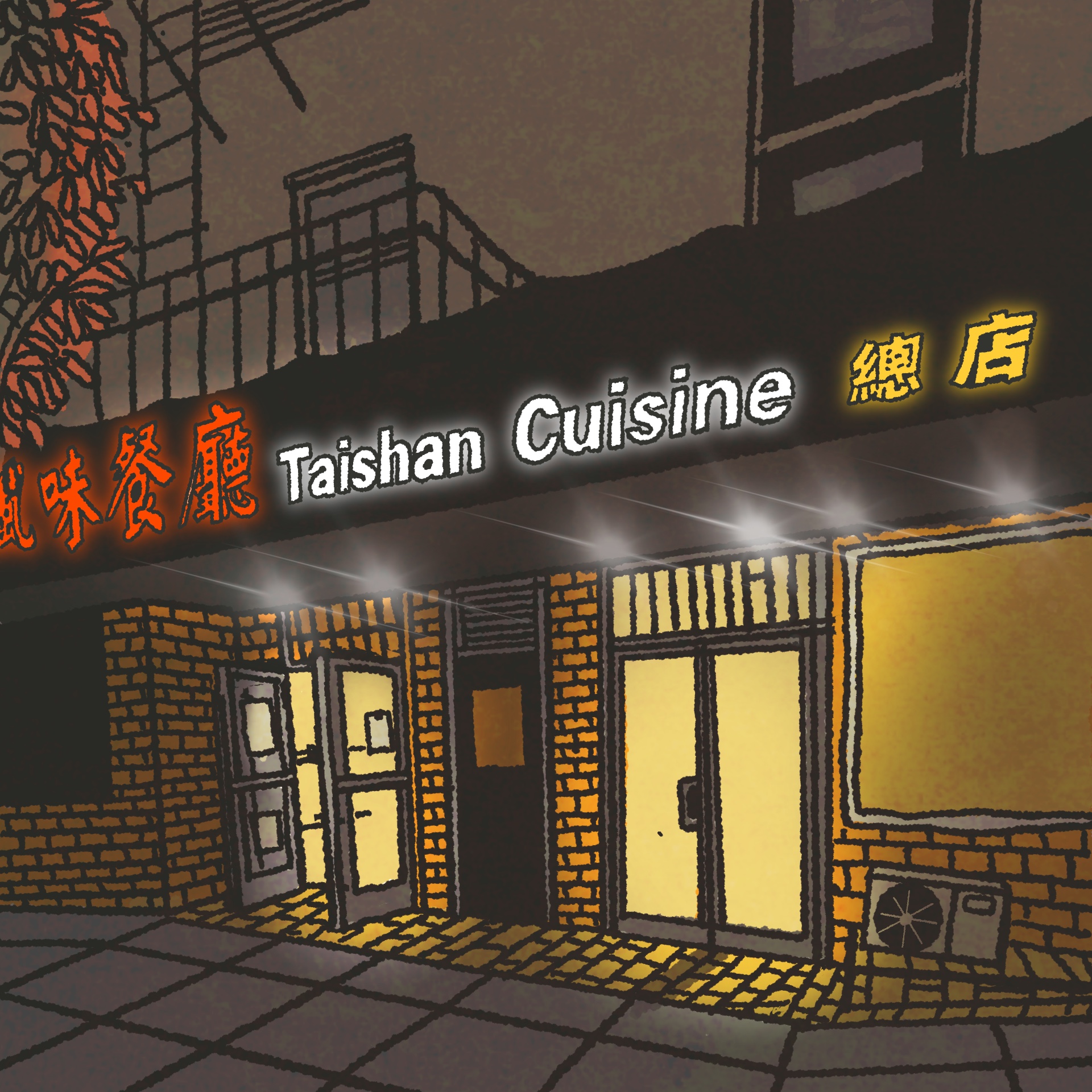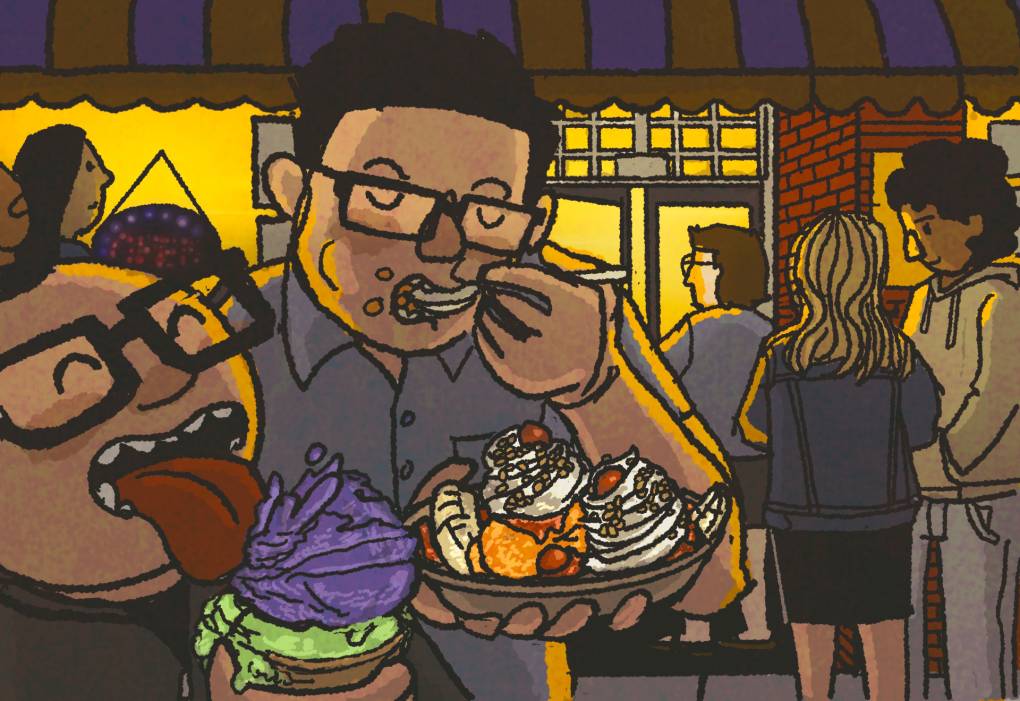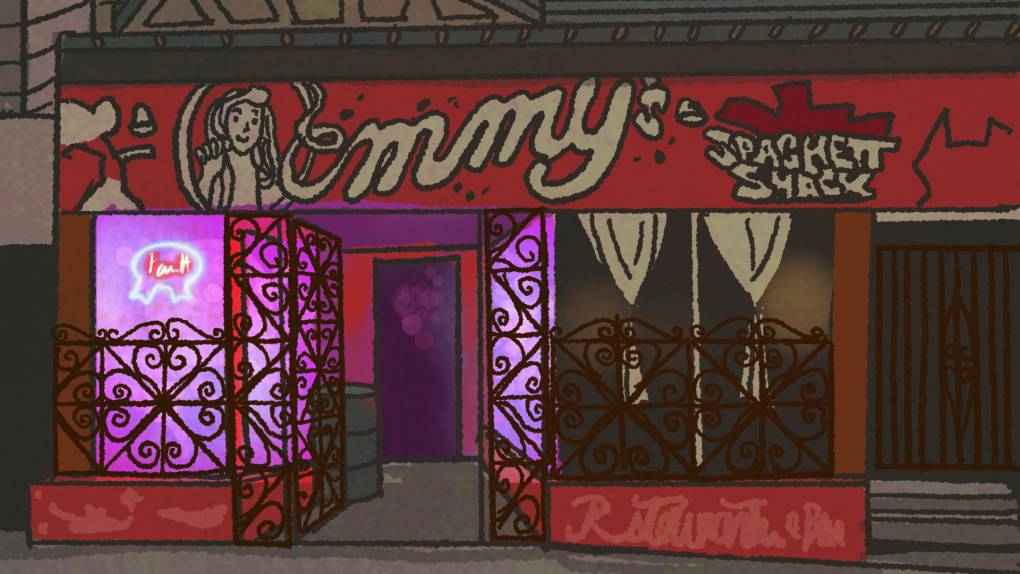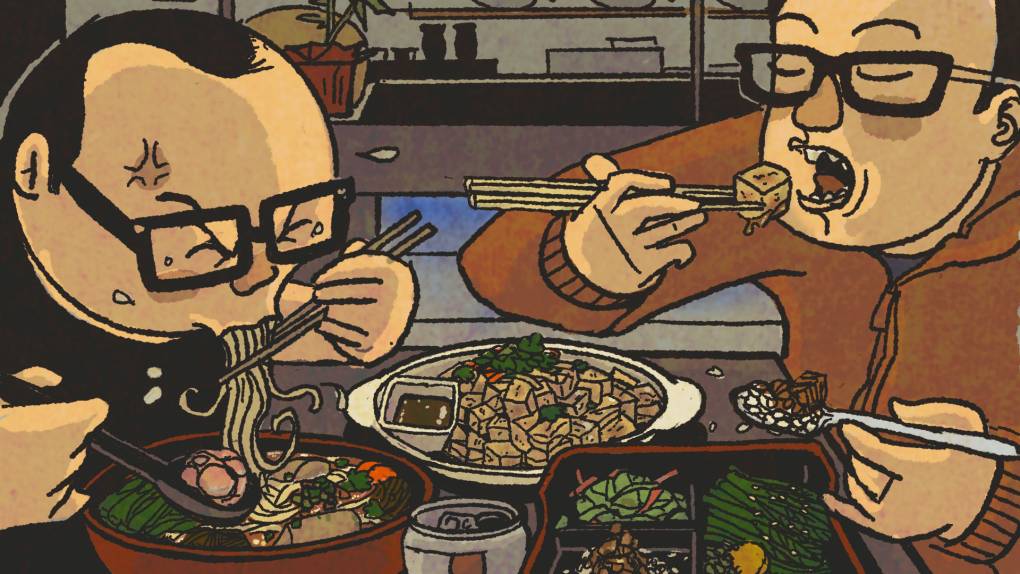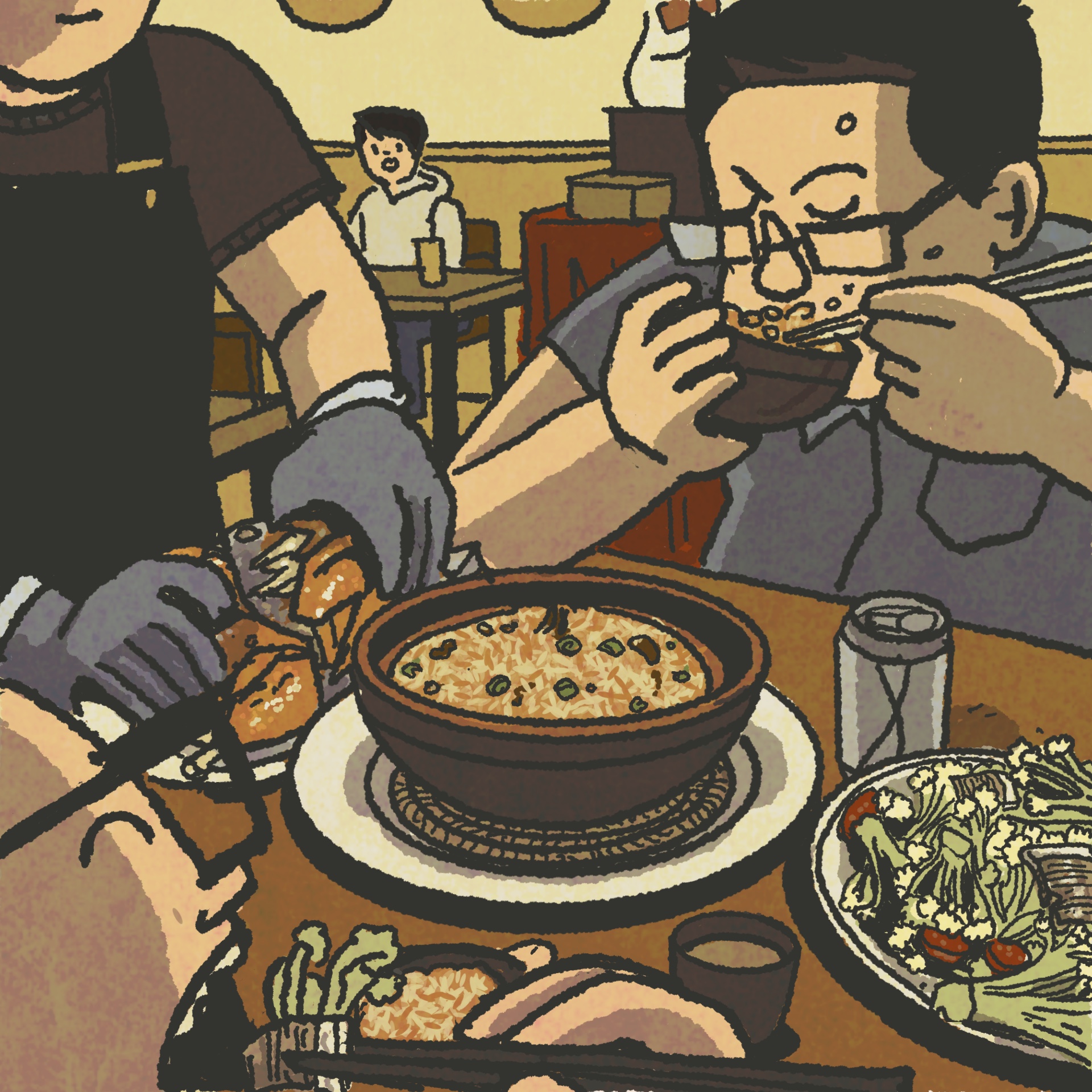
The Midnight Diners is a regular collaboration between KQED food editor Luke Tsai and graphic novelist Thien Pham. Follow them each week as they explore the hot pot restaurants, taco carts and 24-hour casino buffets that make up the Bay Area’s after-hours dining scene.
Late-night meals in San Francisco Chinatown are a long and storied tradition going back more than 100 years — for club-hoppers, post-shift restaurant workers, hippies, Beat poets and boozehounds making one final pit stop after last call.
They’re also all but extinct.
These days, you can count on one hand the number of Chinatown restaurants open later than 9 p.m. Sam Wo, the neighborhood’s oldest and most iconic after-hours spot, recently announced it will close at the end of the year (barring an eleventh-hour miracle) — and it hasn’t been open past 8:30 since pre-pandemic times anyway. These days, if you’re craving a bowl of jook or a plate of sizzling hot beef chow fun after midnight, you’ll find more options out in the Richmond or the Sunset than you will anywhere in the vicinity of Chinatown.
It’s hard, then, to overstate the value of a place like Taishan Cuisine, which very quietly serves some of the tastiest Chinese food in San Francisco until 3 a.m. every night. Quietly, anyway, to those outside the community: Taishan is your favorite Chinese chef’s favorite Chinatown joint — a low-key cult favorite among connoisseurs of regional Chinese cuisine. And at a little before 10 o’clock on a recent Friday night, the dining room was bustling almost exclusively with Cantonese-speaking locals and only seemed to get busier the later it got.
